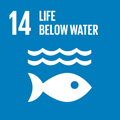- Docente: Claudia Romagnoli
- Credits: 6
- SSD: GEO/02
- Language: English
- Teaching Mode: In-person learning (entirely or partially)
- Campus: Bologna
- Corso: Second cycle degree programme (LM) in Sciences and Management of Nature (cod. 9257)
-
from Oct 10, 2024 to Jan 07, 2025
Learning outcomes
The aim of the course is to introduce students to the main impacts of global change on coastal systems in the past, present and future. Climate changes in the geological time (and particularly in the Late Quaternary) will be taken into account for contextualizing recent/current trends in coastal behavior, and for better understanding the role of the anthropogenic component. Key processes interacting at different temporal and spatial scales on coastal systems and driving their dynamic evolution will be considered. The effects of global change on modern coastal systems will be discussed, with emphasis on major threats due to sea-level rise, to the occurrence of extreme events, coastal erosion and flooding. Possible mitigation and adaptation strategies, enhancing resilience and reducing vulnerability of coastal systems, are also introduced.
Course contents
Introduction to the coastal zone: definition and limits, geological heritage. Spatial and temporal scales in coastal behavior. Main hydrodynamic processes acting in the coastal zone: wind-generated waves and currents, tides and storm surges. Processes affecting sea-level at long, medium and short term. Estimates of recent local and global sea-level rise and predicted scenarios in a climate change perspective. Climate change and potential impacts at the coast: coastal vulnerability to extreme events and sea-level rise.
Coastal systems in low-lying coasts: wave- and tide-dominated littoral systems, deltas and estuaries. Cliffed coasts and factors affecting their evolution.
The beach: beach sediments and transport processes; hydrodynamic and morphological profile of the beach and its short-to medium-term variations in relation with environmental factors and the seasonal wave climate.
Main traditional and up-to-date techniques for coastal study and monitoring. Coastal erosion, natural and anthropogenic causes and possible defense policies in the view of sustainable development. Possible mitigation and adaptation strategies. The Emilia-Romagna coast as a case-study. Coastal vulnerability assessment and risk management issues.
Readings/Bibliography
The main reference texts are the following:
Pranzini E., 2004. La forma delle coste. Zanichelli.
Davidson-Arnott R., 2010. Introduction to Coastal Processes and Geomorphology. Cambridge University Press.
Masselink G., Gehrels R., 2014. Coastal Environments and Global Change. Wiley.
Further specific readings will be provided on specific topics.
Teaching methods
The course is composed of frontal lessons (5 CFU), integrated with laboratory activities, seminaries in class and the participation to specific conference on the topics.
Assessment methods
The final exam is a written test (open questions) on the course subjects. It will be integrated with an essay/comment made by each student on a selected literature paper dealing with the course contents.
Teaching tools
Slides projected during the lessons and other integrating material will be available at the course repository web site "Virtuale".
Office hours
See the website of Claudia Romagnoli
SDGs



This teaching activity contributes to the achievement of the Sustainable Development Goals of the UN 2030 Agenda.
